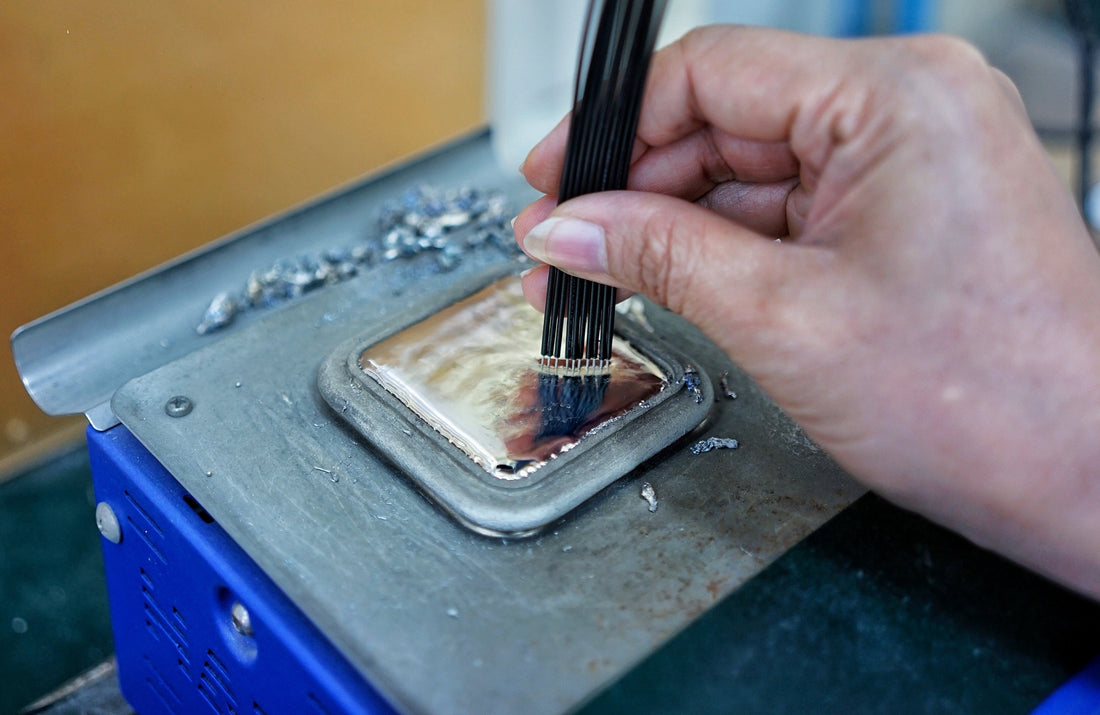A solder pot is a temperature-controlled pot that can be used to solder or tin components. Solder pots can also be used to desolder the through-hole electronic components that are close to the edge of a Printed Circuit Board (PCB).
A solder pot, just like any other piece of equipment, is prone to the typical wear and tear when used on a daily or repeated basis. The solder can eventually corrode the pot and potentially cause solder leakage and holes in the pot which will ultimately damage the pot, and it will then be time to purchase a new solder pot.
However, just as in any other piece of equipment, if you care for and maintain the solder pot, it can help extend the life of the solder pot.
Below are some tips on how to extend the life of your solder pot:\1.
1. Monitor the high temperature of the solder pot
The top reason that your solder pot will deteriorate is that if the temperature is too high. If you run the temperature higher than necessary, it will not only shorten the life of the heating element but will create excess dross. Therefore, try to set the pot to the lowest temperature possible to prevent further corrosion and damage to the pot.
2. Check the solder pot condition daily
It’s important to check the condition of the solder pot daily for safety reasons as well as the condition of the solder pot. Look for any signs of corrosion that would cause the solder to leak out and damage the solder pot. If the pot is corroded beyond repair, then it’s time to replace the pot. Make sure to turn off the pot before you leave as that will destroy the pot too.
3. Look for any solder leakage
When you remove the pot to check its’ condition, let it cool down properly. Then, check that there isn’t any solder leakage in the tray of the solder pot, the body or around the heating elements. Also, look for any holes or corrosion on the surface of the solder pot as well as the solder that is left in the pot. Because the solder is dense, it might not be as obvious that there is a leak in the pot. If you do find any solder leaking, then it’s time to replace the solder pot and purchase a new one.
When you’ve completed the check, put the solder pot back on and rotate the pot to ensure that the heating element does not overheat the pot. Again, this will help increase the lifespan of the pot as well as determine if you need a new one.
4. Clean the solder pot regularly
Regular cleaning of the solder pot is important to prevent solder buildup, oxidation, and contamination. After each use or at regular intervals, remove the excess solder and flux residues from the pot's surface and walls.
Avoid using abrasive materials that could scratch or damage the pot's interior. Instead, use soft brushes, non-abrasive cleaning pads, and specialized solder pot cleaning products. If you choose a very aggressive flux, make sure to wash it off properly to avoid further corrosion.
If you are using lead-free solder, make sure to use a separate pot not only for its longevity, but to also avoid contamination.
You can extend the life of your solder pot by setting up a regular maintenance schedule as well as checking the pot daily. By taking the time and effort to care for the pot, you can make sure that the solder pot performs properly as well as save you time and money.


